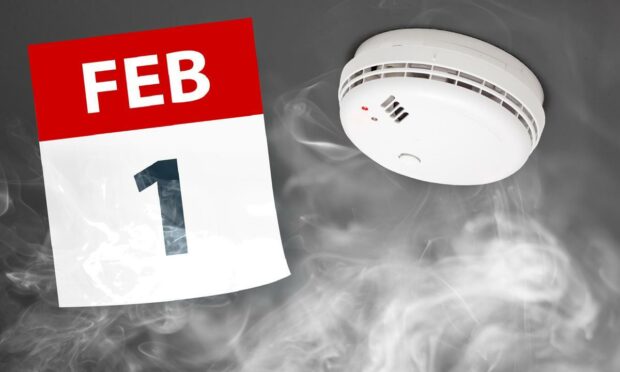The Scottish Government has been urged to do more to help households meet new fire safety regulations next month, as figures show homes across the north and north-east are still without smoke alarms.
More than a third (36%) of all house fires in Aberdeenshire in 2020-21 happened in homes where no alarm was fitted, above the Scottish average of 25%.
Figures from the Scottish Fire and Rescue Service also show alarms were not present in 43 house blazes across the Highlands, representing 33% of all fires in the area, 13 in Moray (26%) and 52 in Aberdeen (21%).
Laws requiring all households have interlinked fire alarm systems comes into force on February 1, and have been introduced following the Grenfell Tower tragedy.
The new legislation will cost homeowners an average of £220, if alarms are fitted by the homeowner rather than a tradesperson.
‘Concerning figures’
North-east MSP Liam Kerr warned thousands of households in the north-east may end up being caught out by the new rules unless more support is offered.
The Scottish Conservative politician said: “These concerning figures highlight the challenges in getting every home to install new alarms ahead of the February deadline.
“This was pushed back by 12 months last year because there was a complete lack of communication from the Scottish Government where people only found out when leaflets from private operators looking for work landed in their letterboxes.
“Since then, the situation hasn’t improved with the SNP doing little to help households meet the cost and time requirements.
“Rather than standing to the side and leaving homeowners to pick up the pieces, the Scottish Government must outline how they will properly help households meet these new requirements.”
‘No one will be criminalised’
Scotland will become the first nation in the UK to have such legislation when it comes into effect next month.
A Scottish Government spokesman said: “It places a legal duty on local authorities to ensure homes in their area meet the new standard.
“The new rules allow flexibility for home owners unable to install alarms by February 1.
“No one will be criminalised if they need more time and there are no penalties for non-compliance.
“However, we would encourage everyone to install these alarms which can help save lives, and we ran a national TV, radio and digital campaign this summer to ensure people across Scotland know the legislation is coming.”
What are the new rules?
The change in the law means that by February 1 every home will need to have:
- one smoke alarm in the room you spend most of the day, usually your living room
- one smoke alarm in every circulation space on each story, such as hallways and landings
- one heat alarm in the kitchen
All smoke alarms should be mounted on the ceiling and be interlinked.
This means if one alarm goes off, they all go off.
For those who have a carbon-fuelled appliance, like a boiler, fire, heater or flue, you must also have a carbon monoxide detector. This does not need to be linked to the fire alarms.
The Scottish Government has provided £500,000 through Care and Repair Scotland to help disabled and older people install the alarms in their homes.
This is in addition to the £1.5 million which has been provided to the Scottish Fire and Rescue Service to install alarms in owner-occupied homes identified as being at higher risk.

